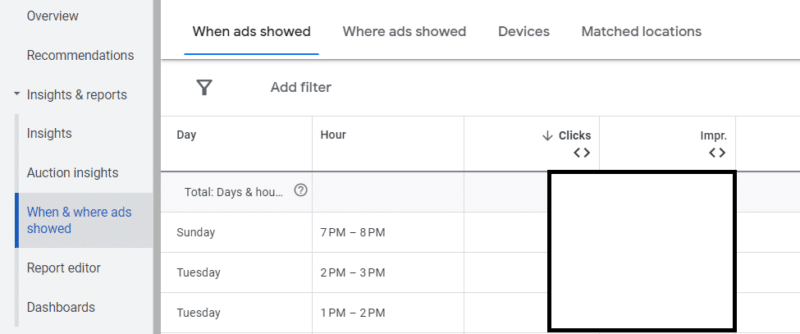
How to harness DSA wins in Performance Max
Dynamic search ads (DSA) have been a staple in Google Ads and Microsoft Ads management for years.
This powerhouse campaign type/setting enhances advertisers’ ability to use their organic search strength to inform their PPC campaigns.
By allowing Google to crawl their site and find the right landing page for a user’s query, advertisers can leverage well-optimized content and turn it into compelling headlines.

One of the reasons DSA was so powerful is that it could function with feed-specific pages or a full index of the site, allowing advertisers to target specific categories effectively.
DSA was particularly popular in industries such as:
- Automotive.
- Travel.
- Real estate.
- Ecommerce.
- Any business with numerous landing pages to cover their products or services.
Essentially, it allowed brands to focus on core objectives rather than having to factor in every single landing page and budget for each one.
DSA also played a significant role in discovering keyword concepts for other campaigns. Advertisers could bid on these exact concepts with exact match, or leverage predictive AI with broad match.
However, dynamic search ads appear to be phased out in favor of Performance Max (PMax) campaigns.
Advertisers have noted a decline in DSA performance for the past few months (namely, a lack of serving) and accounts running all campaigns have seen PMax ramp up.

Performance Max supports every ad type within Google:
- Search: Ads serving on the SERP/SERE (search engine result page/search engine result experience).
- Display: Visual ads serving on third-party sites.
- YouTube: Video ads serving on youtube or display spots depending on the format.
- Discover: Part visual and part text ads serving on Google Discover.
- Local ads: Google Business Profile-oriented ads serving on the map section of the SERP/SERE.
- Shopping: Product listing ads that serve on the SERP/SERE, youtube, and display spots.
Advertisers are actively forging the rules of engagement for PMax, which represent an operational shift for those accustomed to running dynamic search ads.
First and foremost, this means accounting for the visual placements (display, video, discover), which hold top-of-funnel value and cheaper auction prices.
Yet, it also means adjusting expectations for PPC campaigns. Many think of PPC campaigns as transactional; if it doesn’t lead to a sale, it’s a waste.
However, with top-of-funnel visual placements being baked into accounts, the criteria for success must also shift.
This post aims to prepare advertisers and their SEO counterparts who rely on DSA as part of their SEO strategy to harness what they gained from DSA within PMax.
Although no official statement about phasing out DSA has come from Google, the recommendations to upgrade DSA indicate a potential shift.
It’s crucial to note that this post was written when both dynamic search ads and PMax could run simultaneously.
If this changes, the article will be updated accordingly to reflect the new rules of engagement.
What we lose in transitioning from DSA to Performance Max
Before discussing what we are gaining in the transition, it’s important to understand the losses and how to mitigate them.
First and foremost is the idea of exclusions on the site itself. A big part of the DSA setup was adding rules for site exclusions (home page, blog, etc.).
While Performance Max allows for the use of feeds and URL expansion, it doesn’t provide the ability to exclude specific parts of the site.
This means certain categories may trigger DSA components within Performance Max, resulting in serving ads you don’t want to allocate budget to.
To counteract this, including audience signals for search terms reflecting the desired categories and adding negatives within Performance Max becomes crucial.
While not everyone has this yet, the “Where/When Ads Showed” insights report can help advertisers know which placements to exclude at the account level.

Since budget can now go to the other campaign types, it’s critical to keep an eagle eye on metrics like interaction rate (click-through rate or CTR for anything that has a visual component) and average CPC (cost per click) to ensure budget isn’t being disproportionately allocated to top of the funnel.
We’re losing the clear answer with impression share (which would tell us if we were losing due to budget or rank). Using these proxies will be critical in ensuring proper budget.
Gains in the transition to Performance Max
Transitioning from DSA to Performance Max offers several significant gains. One of the key benefits is the ability to control all assets used, not just the descriptions.
While a good SEO strategy could heavily influence headlines, there was no guarantee of having the desired headlines in DSA.
With Performance Max, although you won’t know the exact combination served to each person, you can ensure that each campaign includes the correct creative.

Furthermore, Performance Max allows for the discovery of additional audiences that might have been overlooked due to the emphasis on visual creative.
As PPC and SEO move toward a more visual content future along with consumers demanding easier information processing, Performance Max enables advertisers to find the best landing page and category for a user’s query or interest and prepare it with visual content that speaks to their preferences.
While the phasing out of dynamic search ads may not have an official statement from Google yet, the writing is on the wall.

The biggest collaboration area is visual content and getting more comfortable with PPC and SEO being responsible for the top of funnel.
Additionally, for those who don’t want to give up DSA, Microsoft has a strong DSA offering with essentially the same rules of engagement as Google’s.
If PMax isn’t delivering the results you need, be empowered to test Microsoft’s DSA solution.
The post How to harness DSA wins in Performance Max appeared first on Search Engine Land.
from Search Engine Land https://searchengineland.com/dsa-wins-performance-max-428883
via free Seo Tools